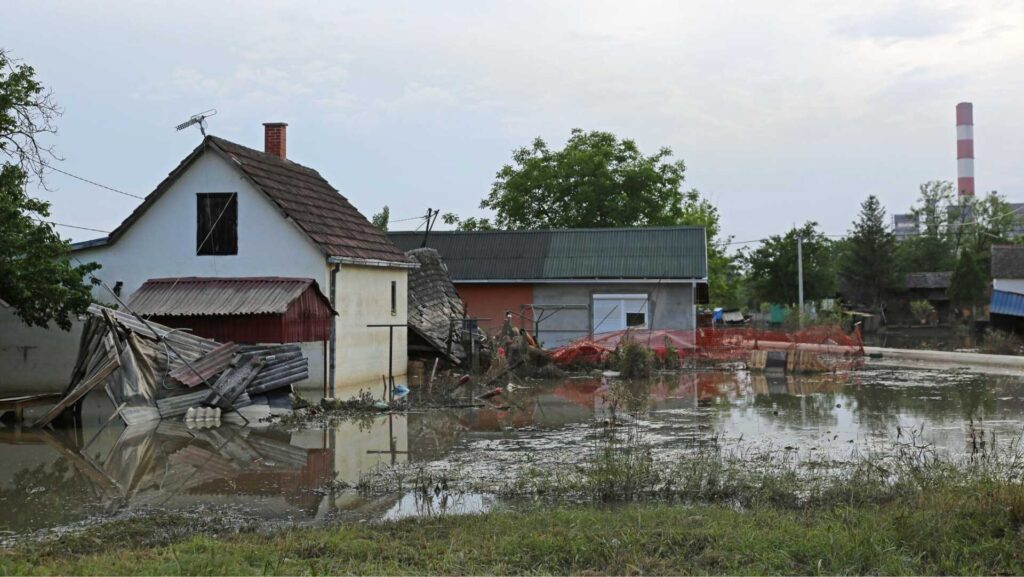
Contents
When faced with flood damage, it’s essential to act swiftly and methodically. You need to assess the situation, document the damage, and begin water removal—all while prioritizing safety. Each step plays a critical role in your recovery process, as neglecting one can lead to further complications. Understanding these steps can make a significant difference in how quickly you bounce back. What comes next is important to preventing future issues.
Key Takeaways
- Assess and document all damage thoroughly with photos and notes for insurance claims.
- Implement emergency water removal using a wet/dry vacuum while ensuring safety protocols.
- Dry the area using dehumidifiers and open windows to promote ventilation.
- Repair any structural damage promptly, consulting with professionals if necessary.
- Prevent future flooding by maintaining drainage systems and considering flood insurance.
Assessing the Damage Immediately
When disaster strikes, evaluating the damage immediately is essential for effective recovery. Start by documenting everything you see—take photos and make notes. This damage evaluation helps you grasp the extent of loss and plays an important role in your insurance claims process.
You’ll want to ensure you capture every detail, from structural harm to ruined belongings. Don’t rush; this step is critical. Understanding the full scope allows you to communicate clearly with your insurance adjuster, which can greatly affect your claim outcome.
If you feel overwhelmed, reach out to friends or community members for support; you’re not alone in this.
Implementing Emergency Water Removal Techniques
After evaluating the damage, your next priority is to implement emergency water removal techniques to prevent further destruction.
Begin with water extraction, using a wet/dry vacuum or a submersible pump, if available. These tools can quickly remove standing water, reducing the risk of mold and structural damage.
Before you start, make sure you follow safety protocols. Wear protective gear like gloves and boots, and be cautious of electrical hazards. Turn off the electricity in affected areas to avoid shocks.
Check for contaminants in the water; if it’s floodwater, it may be unsafe.
If you’re overwhelmed, don’t hesitate to reach out to professionals. They’ve the expertise and equipment to handle extensive flooding effectively.
Implementing these techniques with care and urgency can make a significant difference in your recovery process, helping you reclaim your space and peace of mind.
Drying and Dehumidifying the Affected Area
Effective drying and dehumidifying are crucial steps in the recovery process after flooding. To restore your space, start by taking moisture measurements throughout the affected area. This’ll help you identify the most saturated spots and tailor your approach effectively.
Next, focus on dehumidifier selection. Choose a unit with the right capacity for your space; a small room may only need a portable model, while larger areas might require a commercial-grade dehumidifier. Make sure it’s operating efficiently to extract moisture from the air, preventing mold and further damage.
As you dry out your space, keep windows open when possible for ventilation, which enhances the dehumidifier’s effectiveness.
Remember, this process can take time, but patience is key. You’re not alone in this; many have faced similar challenges and emerged stronger.
Repairing Structural Damage Promptly
While addressing flood damage, repairing structural damage promptly is essential to ensure your home remains safe and sound. Without swift action, you risk compromising your home’s structural integrity.
Here are key repair techniques to take into account:
- Assess the extent of the damage immediately.
- Consult with a structural engineer for expert guidance.
- Use quality materials that assure durability and safety.
- Reinforce weakened areas to prevent future issues.
- Document all repairs for insurance purposes.
Taking these steps safeguards your living space and fosters a sense of community. You’re not just fixing walls; you’re restoring a place where memories are made.
Preventing Future Flooding Issues
To prevent future flooding issues, it’s essential to understand the various factors that contribute to water damage in your home. Start by examining your property’s drainage systems. Are they functioning effectively? Regular maintenance can prevent blockages and ensure that water flows away from your foundation.
Consider investing in flood insurance. While it may feel like an extra expense, it offers peace of mind and financial protection during unexpected events. Knowing you’re covered can alleviate some anxiety about potential flooding.
Additionally, evaluate your landscaping. Proper grading and strategically placed plants can redirect water flow and minimize risks.
Collaborate with neighbors and local organizations to create community solutions for flood prevention.
Summary
In the wake of a flood, swift action is your lifeboat. Just as a gardener prunes wilting plants to encourage new growth, you must assess, remove water, and dry your space to foster recovery. By taking these essential steps, you restore your home and safeguard against future disasters. Remember, every flood is a chance to grow stronger and more resilient. Don’t let the waters drown your spirit; rise above and rebuild with purpose.
Recent Posts
Secrets to Swift Flood Damage Recovery
When faced with flood damage, knowing how to act quickly can make all the difference.
Quick Flood Damage Repair: Essential Steps
When faced with flood damage, your first priority should be safety. Assess the situation quickly,
What Are Quick Techniques for Flood Damage Repair?
When facing flood damage, it’s vital to assess the extent of the situation quickly and
